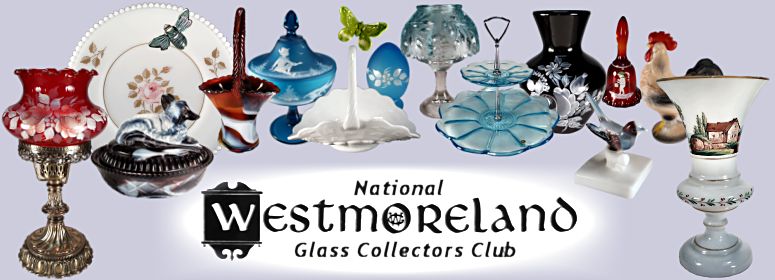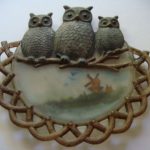DECORATED GLASS
Westmoreland decorated a variety of its early glass, primarily opal, using the process of "transferware." Transfers were used in lieu of hand painting, to save time and labor expense. Applied to blanks, the transfers then only needed to be colored over and a few enamel touches added to make them look hand done. Painting was done using the "cold paint" method which means that the piece was not "fired" or placed back in the kiln to permanently adhere the paint to the glass. Glass of this period and type should never be washed since the paint will be removed. Examples of this type of glass include the "Pottery Effects" or "Rookwood" glass line which Westmoreland produced in response to the increase interest in decorated pottery in the early 1900s. This decoration is commonly mistaken as Fostoria glass which also had a line of transfer ware glass.
NEWS & EVENTS
GALLERY
MEMBERSHIP
HAVE A QUESTION?
Email us and we will respond as soon as possible.


